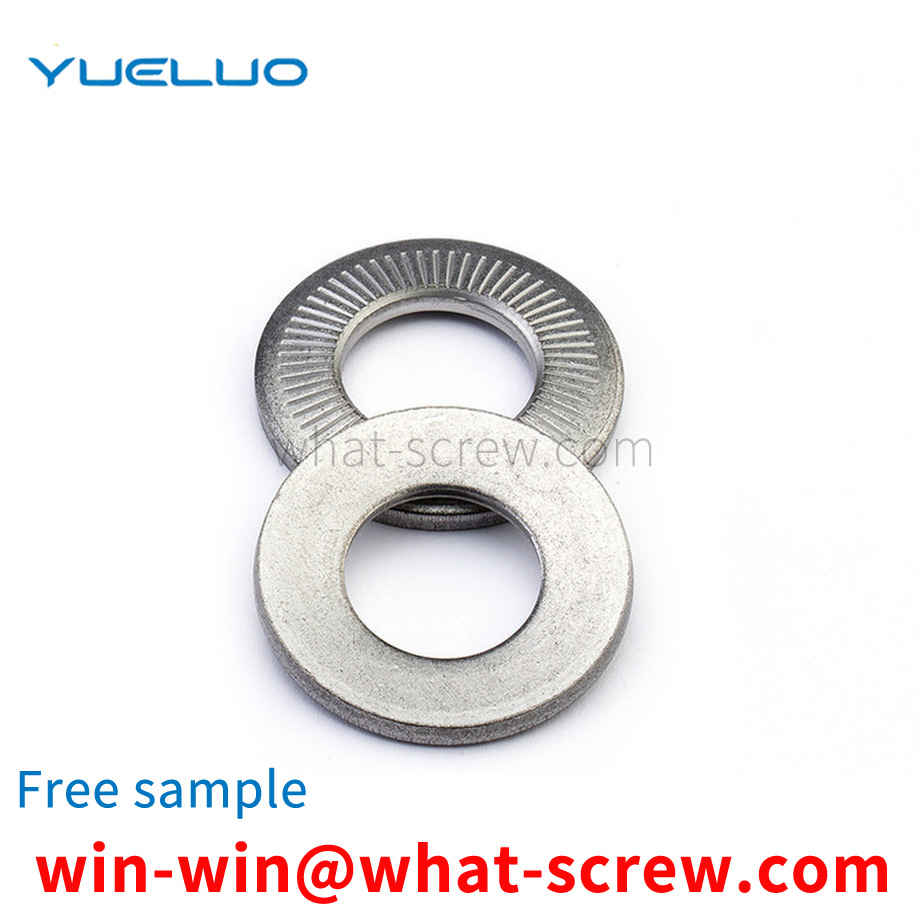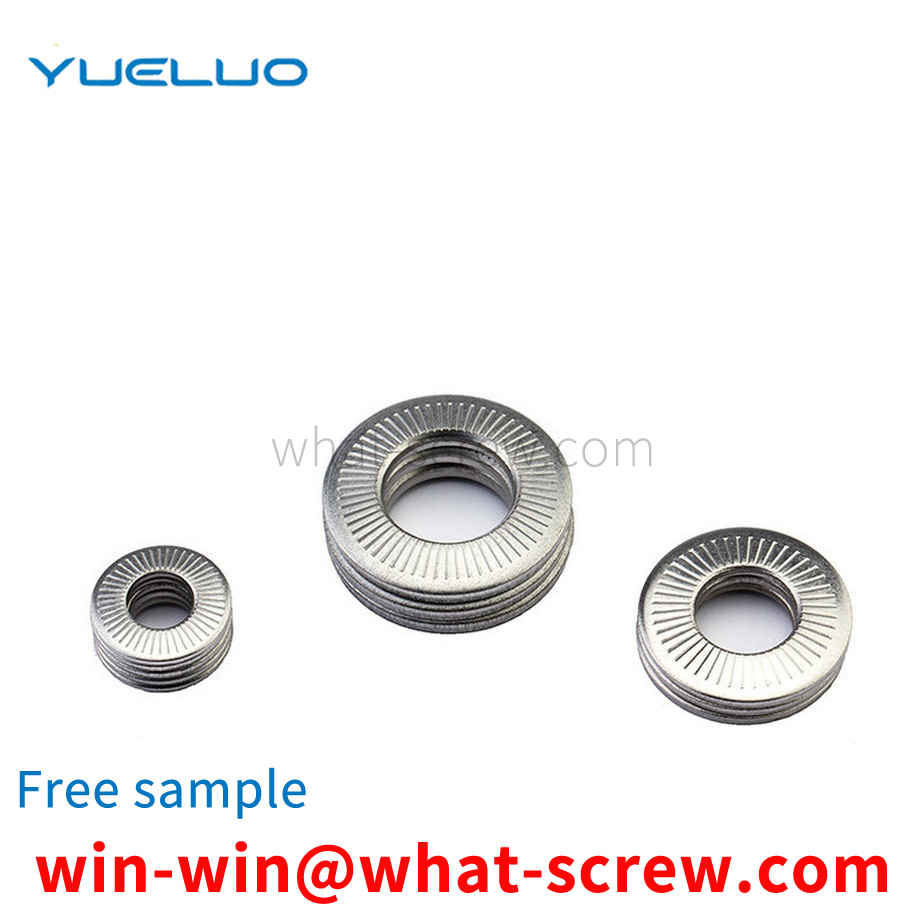Bolt: A type of fastener consisting of a head and a screw (a cylinder with an external thread), which needs to be matched with a nut to fasten and connect two parts with through holes. This form of connection is called a bolted connection. If the nut is unscrewed from the bolt, the two parts can be separated, so the bolt connection is a detachable connection. [1] Stud: A type of fastener that has no head and only has external threads on both ends. When connecting, one end of it must be screwed into the part with the internal threaded hole, the other end must pass through the part with the through hole, and then the nut must be screwed on, even if the two parts are tightly connected as a whole. This form of connection is called a stud connection, which is also a detachable connection. It is mainly used for occasions where one of the connected parts is thick, requires a compact structure, or is not suitable for bolt connection due to frequent disassembly. [1] Screw: It is also a type of fastener consisting of a head and a screw. It can be divided into three categories according to the purpose: machine screws, set screws and special-purpose screws. Machine screws are mainly used for a fastened connection between a part with a fixed threaded hole and a part with a through hole, without the need for nut matching (this connection form is called screw connection, which is also a detachable connection; it can also be Cooperate with the nut, it is used for the fast connection between two parts with through holes.) The set screw is mainly used to fix the relative position between the two parts. Special purpose screws, such as eyebolts, are used for hoisting parts. [1] Nuts: with internal threaded holes, generally in the shape of a flat hexagonal column, but also in a flat square column or flat cylindrical shape, with bolts, studs or machine screws, used to fasten and connect two parts, make it a whole. [1] 5. Self-tapping screw: Similar to machine screw, but the thread on the screw is a special thread for self-tapping screw. It is used to fasten and connect two thin metal components to make them a whole. Small holes need to be made in advance on the components. Due to the high hardness of this kind of screw, it can be directly screwed into the hole of the component, so that the Forming a corresponding internal thread [1] 6. Wood screw: It is also similar to a machine screw, but the thread on the screw is a special thread for wood screws, which can be directly screwed into wooden components (or parts) to connect a band through The metal (or non-metallic) part of the hole is fastened to a wooden member. This connection is also a detachable connection. [1] 7. Washers: A type of fastener with an oblate annular shape. It is placed between the supporting surface of the bolt, screw or nut and the surface of the connecting part, which increases the contact surface area of the connected parts, reduces the pressure per unit area and protects the surface of the connected parts from damage; another type of elastic washer, It can also play a role in preventing the nut from loosening. [1] 8. Retaining ring: It is installed in the shaft groove or shaft hole groove of the machine and equipment, and plays the role of preventing the parts on the shaft or the hole from moving left and right. [1] 9. Pins: mainly used for positioning the left and right parts, and some are also used for connecting parts, fixing parts, transmitting power or locking fasteners. [1] 10. Rivet: A type of fastener consisting of a head and a shank, which is used to fasten and connect two parts (or components) with holes to make them a whole. This form of connection is called rivet connection, or riveting for short. It is a non-removable link. Because if the two parts joined together are separated, the rivets on the parts must be broken. [1] 11. Components and connection pairs: Assemblies are a type of fasteners supplied in combination, such as a combination of a certain machine screw (or bolt, self-supplied screw) and a flat washer (or spring washer, lock washer); Connection pair refers to a type of fastener that is supplied by a combination of special bolts, nuts and washers, such as high-strength hexagon head bolt connection pairs for steel structures. [1] 12. Welding nail: a heterogeneous fastener composed of a nail rod and a nail head (or no nail head), which is fixed to a part (or component) by welding, so as to be connected with other parts. .
Wood screws are similar to machine screws, but the thread on the screw is a special thread for wood screws, which can be directly screwed into wooden components (or parts) to connect a metal (or non-metal) part with a through hole to a wood screw. The components are fastened together. This connection is also a detachable connection.
A crank press with bilateral transmission, such as a briquettes machine, requires 1. The rotation phase of the main shaft gears on both sides must be consistent; 2. The connection between the main shaft and the main shaft gear should be free of gaps. In order to meet this requirement, there are mainly two schemes for the connection between the main shaft and the main shaft gear. Option 1, one or both ends of the main shaft and the main shaft gear are connected by flat keys. This scheme requires that the matching clearance between the main shaft and the gear hub is small, so it is difficult to process, assemble and maintain; Option 2, one or both ends of the main shaft and the main shaft gear Using taper-sleeve connection, this solution has good performance, but high cost and poor rigidity
The purpose of Guangdong Yueluo Hardware Industry Co., Ltd. is to overcome the deficiencies in the existing technology and provide a square nut fastener for cable tray installation, which has a simple and reasonable structure, and is extremely convenient and flexible to operate; it does not occupy C-shaped steel after installation. The space at the bottom increases the diversity of installation, and can be applied to square nuts of different thicknesses, and the installation is firm
In many national standards, there will be a division of intensity levels. Combination screws are no exception. The strength grade of the combined screw is divided according to the material of the screw wire and the hardness index of the screw wire. General combination screw materials are divided into stainless steel and iron, stainless steel is divided into stainless steel 201, stainless steel 304 and stainless steel 316 and so on. Iron is divided into three types: low carbon steel, medium carbon steel, and high carbon steel. Carbon steel combination screws refer to iron combination screws. Generally, iron combination screws are classified into grades 4.8, 8.8, 10.9, and 12.9. However, the combination screws of grade 10.9 and grade 12.9 are rarely used in the market, so we will not talk about them here. And the combination screws on the market are more commonly used combination screws of grade 4.8 and 8.8. 4.8 grade combination screws are generally made of 1010A screw wire rods. After the screw wire rods are beaten into screws, they are combined with spring flat washers. After production, this 4.8 grade combination screw does not need to be hardened. Its hardness can reach 4.8. 8.8 grade combination screws are generally made of screw wire 10B21 piers. After the screw and wire piers are made into screws, they are equipped with spring washers and flat washers. They can pass through the automatic elastic flat washer machine to rub the three pieces together. Fasten the spring-flat washer combination on the screw, and the spring-flat washer will not fall off. After the combination screw is produced, it needs to be hardened to make the hardness reach 8.8. After the hardness reaches 8.8, we need to take it for electroplating. In order to prevent hydrogen embrittlement of the spring washer in the 8.8-level combination screw with added hardness, it is easy to break. In this way, we have to perform hydrogen removal treatment on the hardened combined screws, and only after the hydrogen removal can be plated. In short, there are many kinds of standard grades of combined screw strength, but generally only two types are used in the market, one is the 4.8-level combined screw strength, and the other is the 8.8-level combined screw strength. 4.8-level combination screws are the most used in the market and customer needs, and have a wide range of applications. As for the standard strength of 8.8-level combination screws, we generally refer to 8.8-level hexagon socket head combination screws, 8.8-level pan head combination screws, and 8.8-level external hexagon combination screws. These three are more commonly used.
We have many years of experience in the production and sales of screws, nuts, flat washers, etc. The main products are: butterfly screws, furniture fastening hardware accessories, wood inlaid nuts, camera tripods, BS3410 gaskets and other products, we can provide you with suitable fasteners piece solution.



















 Service Hotline
Service Hotline




